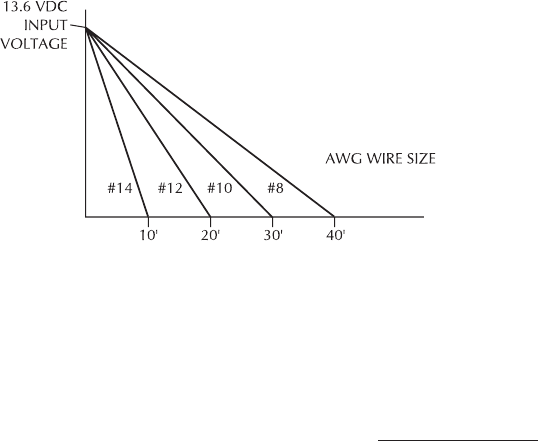
6
Your Ray48 radio should be connected to the nearest primary source of ship's DC power.
A typical source may be a circuit breaker on the power panel or a fuse block near the unit.
When connecting to either of these sources, the circuit breaker or other in-line fuse should
be rated at 10 amps.
It is recommended that terminal lugs be used to connect the power cable to the DC supply
and the lug connections should be both crimped and soldered.
This is very important in
order to insure adequate current draw to the equipment. Intermittent operation may result if
an insufficient connection is made to the power source. The connection terminal should be
clean, with no sign of corrosion.
The RED (+) wire is connected to the positive terminal of the power source or battery.
The BLACK (-) wire is connected to the negative (ground) of the power source or battery.
Should the power polarity be inadvertently reversed, the 10 amp. in-line fuse located in the
RED (+) conductor will open. Check the input power leads for correct polarity with a VOM,
reconnect the leads observing correct polarity, and replace the fuse. Be sure to use the same
rate and type of fuse.
2.4.2 External Speaker Connections
The YELLOW (+) wire and GREEN (-) wire are used for connecting the Ray48 to an
external speaker (Refer to Fig.2-4).
Three watts of audio output power is provided for an external 4 ohm speaker.
A suitable speaker can be purchased from your local marine dealer.
Connect the YELLOW (+) wire and GREEN (-) wire to the speaker observing polarity as it
is marked on the speaker. When connected, the external speaker will function
simultaneously with the internal speaker.
In most cases the length of the power cable should be adequate enough to reach the DC
power source. If additional wire length is required, the cable can be extended by adding
more cable as necessary. However, for power cable runs longer than 15 feet, larger wire
diameter size should be used to prevent voltage line loss. Fig 2-5 provides recommended
wire sizes to use for various cable run distances.
Fig.2-5 POWER CABLE LENGTH


















